Have you ever wondered, why do dogs have wet noses? This intriguing question not only sparks curiosity but also reveals a fascinating truth about our furry friends! Dogs’ noses are more than just adorable features; they serve a vital purpose in their health and communication. You might think, “Is it normal for a dog’s nose to be wet?” Absolutely! A wet nose helps dogs to detect scents more effectively, making them exceptional at sniffing out everything from treats to potential dangers. But, what other secrets does a dog’s wet nose hold? In this post, we will dive deep into the reasons behind this unique trait and explore how it contributes to a dog’s overall well-being. From dog health to their incredible sense of smell, you’ll be amazed by the science behind those cold, wet noses. So, if you’re curious about how a simple wet nose can impact your pup’s world, keep reading! Discover the truth behind why do dogs have wet noses, and you might just see your canine companion in a whole new light. Let’s unravel this mystery together!
The Science Behind Dog Noses: Why Are They Always Wet?
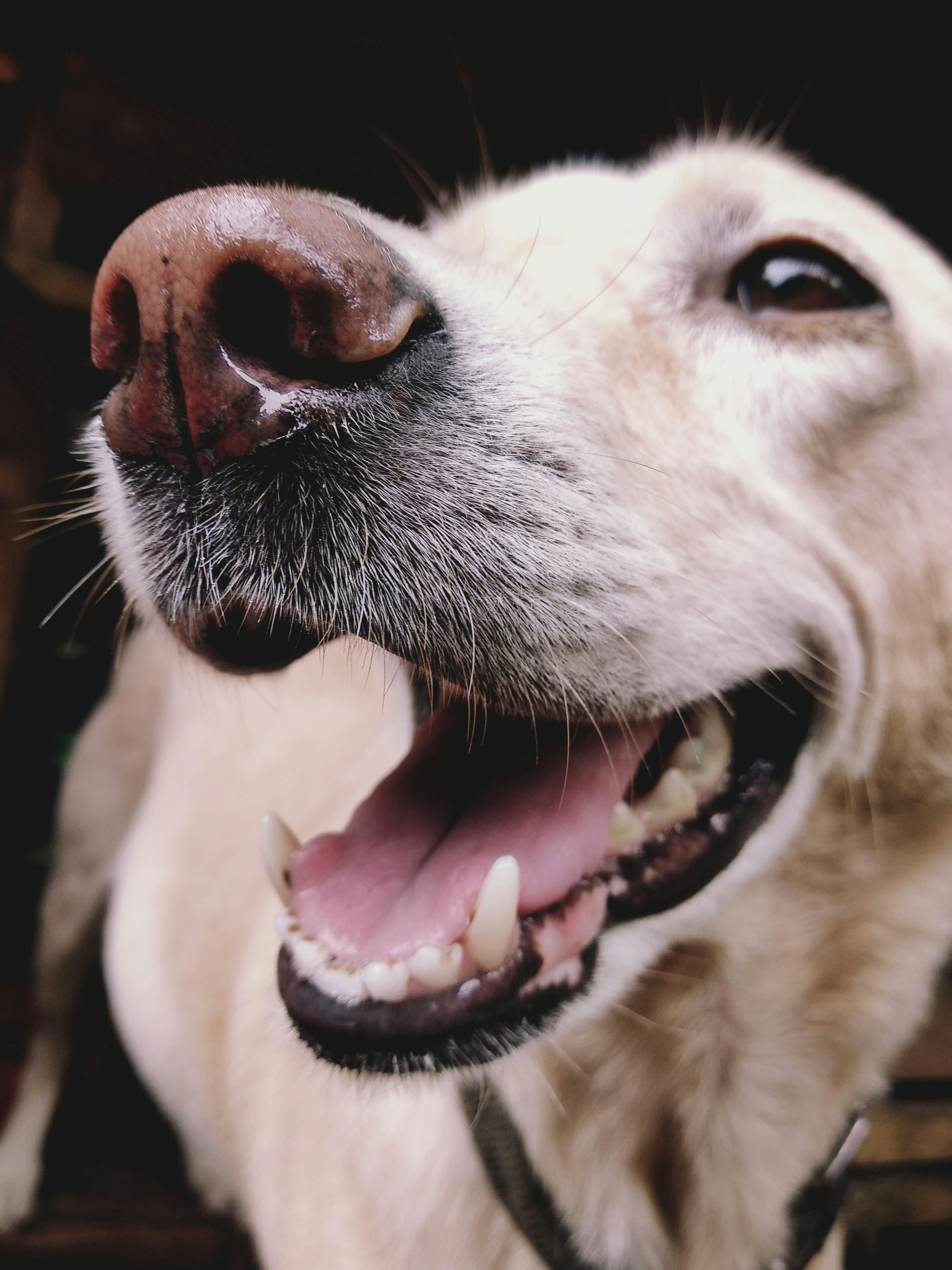
The curious nature of dogs have always fascinated humans, and one of the most intriguing aspects is their wet noses. Have you ever wonder why dogs have wet noses? It’s not just a quirky feature; there’s actual science behind it!
What Makes a Dog’s Nose Wet?
Dogs’ noses are typically wet due to a combination of biological and environmental factors. The moisture on a dog’s nose comes from a few sources, including:
- Mucus Glands: Dogs have special glands on their noses that produce moisture. This helps in keeping their noses hydrated.
- Licking: Dogs often lick their noses, which adds to the wetness. This is a behavior that also serves to gather scent particles from the air.
- Environmental Factors: Humidity and temperature can influence how wet a dog’s nose is. On hot, humid days, for example, you might notice their noses are wetter.
Why Do Dogs Have Wet Noses? The Science Explained
So, why do dogs have wet noses? One of the main reasons is because it enhances their sense of smell. A wet nose can capture scent molecules more effectively than a dry one. This is vital for dogs, as they rely heavily on their sense of smell for communication and navigation. Here’s how it works:
- Increased Sensitivity: The moisture on a dog’s nose helps to dissolve scent particles, making it easier for their olfactory receptors to detect them.
- Cooling Mechanism: Wet noses also helps in thermoregulation. Dogs do not sweat like humans; instead, they use their noses to cool down. This wetness evaporates, which cools their body temperature.
Historical Context of Dogs and Their Noses
Historically, dogs have been used for various purposes, from hunting to companionship. Their noses have played a crucial role in these activities, which is why their wetness has developed as a beneficial trait.
- Hunting: In ancient times, dogs were bred for their ability to track scents. A wet nose was advantageous for finding prey.
- Companionship: As dogs transitioned into being pets, their sense of smell continued to play a role in how they communicate with humans, enhancing their ability to bond.
Fun Facts About Dogs’ Noses
- Unique Patterns: Just like human fingerprints, every dog has a unique nose print, which can be used for identification.
- Color Differences: The color of a dog’s nose can vary. Some dogs have black noses, while others might have pink or brown ones. This doesn’t affect their sense of smell but can be an indicator of breed.
- Temperature Regulation: Dogs can also sense changes in the environment through their noses. A wet nose can indicate a dog is healthy, while a dry nose might suggest they need hydration or could be sick.
Comparing Dog Noses to Human Noses
| Feature | Dog Nose | Human Nose |
|---|---|---|
| Moisture Level | Typically wet | Typically dry |
| Smell Sensitivity | Extremely high | Moderate |
| Heat Regulation | Evaporates moisture for cooling | Sweating is primary method |
| Identification | Unique nose prints | No unique prints |
Practical Examples of How Wet Noses Help Dogs
- Tracking: Dogs can follow a scent trail over long distances, which is crucial for search and rescue missions.
- Social Interaction: Dogs use their noses to gather information about each other, which helps them understand their environment and other animals.
- Health Indicators: Pet owners often check their dog’s nose to assess health. A sudden change in moisture could indicate a health issue.
With all this fascinating information, it’s clear that the wet noses of dogs are more than just an oddity; they play a vital role in a dog’s life and well-being. So, the next time you observe your furry friend with a wet nose, remember, there’s a rich tapestry of science and history behind that seemingly simple feature. It helps them smell better, stay cool, and interact with the world. Understanding why do dogs have wet noses can deepen our appreciation for these beloved pets and their incredible abilities.
5 Surprising Reasons Your Dog’s Nose Is Moist: Uncover the Truth!
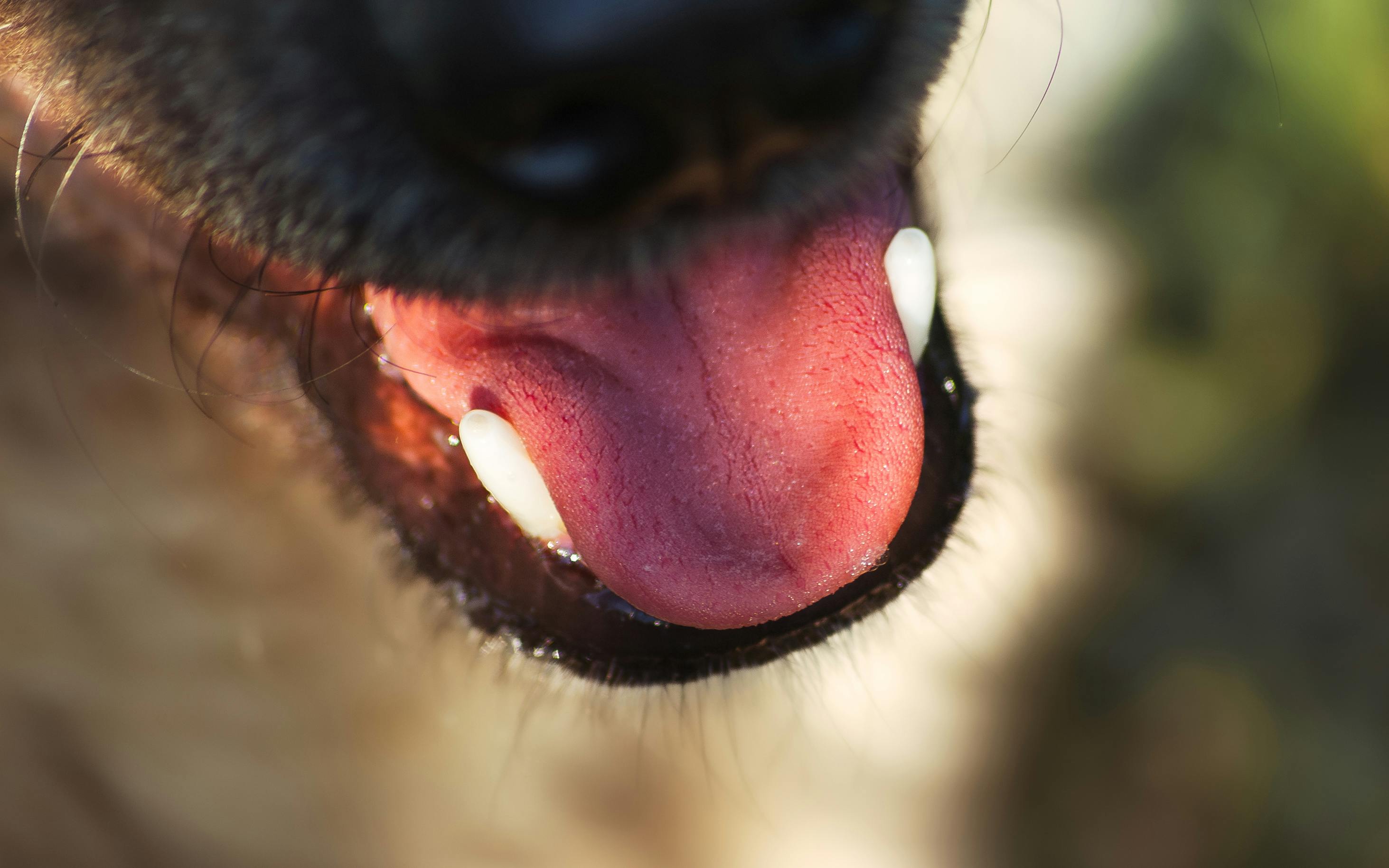
Have you ever notice your dog’s nose? It’s often cool and moist, but why is that? Many people think that wet noses are just one of those quirky things about dogs, but there are actually several surprising reasons behind it. If you ever wonder, “Why do dogs have wet noses?” you’re in the right place! Let’s dive into the fascinating truth behind those damp dog snouts.
1. Temperature Regulation
One of the main reasons a dog’s nose is wet is due to thermoregulation. Unlike humans, who sweat to cool off, dogs primarily rely on their nose and panting to regulate their body temperature. The moisture on their noses helps to cool the air they inhale, which can be crucial during hot weather.
- Dogs have fewer sweat glands than humans.
- Their nose acts like a natural air conditioner.
- This moisture helps them stay cool and comfortable.
2. Enhanced Sense of Smell
Dogs have an incredible sense of smell, and a moist nose actually helps them smell better! The moisture on a dog’s nose helps to capture scent particles from the air, which enhances their olfactory abilities. This is why dogs are often used in search and rescue operations or as service animals.
- A wet nose helps to trap scent particles.
- Dogs can detect certain smells up to 100,000 times better than humans.
- The moisture allows them to analyze scents more effectively.
3. Communication Tool
Believe it or not, a dog’s nose can also be a tool for communication! Dogs use their noses to gather information about their environment and other animals. When they sniff, they’re not just being curious; they’re actually reading the “scent messages” left by other dogs and creatures.
- Dogs can tell a lot about other animals through scent.
- A wet nose can indicate that a dog is feeling friendly and curious.
- Dogs often greet each other by sniffing noses, a social behavior.
4. Health Indicators
The condition of your dog’s nose can sometimes indicate their health. A wet and cool nose is typically a sign of a healthy dog, while a dry or cracked nose might signal a problem. However, this isn’t always the case, and several factors can affect a dog’s nose moisture.
- Healthy dog noses are usually moist and cool.
- Changes in moisture can indicate illness or dehydration.
- Always consult a vet if you notice unusual changes.
5. Environmental Factors
Have you notice how your dog’s nose can change with the weather? The moisture level on a dog’s nose can fluctuate. If it’s humid outside, their nose might be wetter compared to a dry, cold day.
- Environmental humidity affects nose moisture.
- Dogs might have drier noses during winter.
- A wet nose doesn’t always mean they are healthy; it depends on various factors.
Quick Facts About Dog Noses
- Dogs have about 300 million scent receptors in their noses.
- The texture of a dog’s nose can be unique to each individual, much like human fingerprints.
- Nose color can vary from breed to breed, and isn’t an indicator of health.
Comparisons: Dog Nose vs. Human Nose
| Feature | Dog Nose | Human Nose |
|---|---|---|
| Scent Receptors | ~300 million | ~5 million |
| Moisture Function | Enhances smell and cooling | Helps with smell, but less critical for temperature regulation |
| Texture | Unique patterns for each dog | Similar texture across humans |
| Temperature Control | Major role through moisture | Minor role, mainly through sweating |
With all these surprising reasons, it’s easy to see why dog noses are so fascinating! Their wet noses play crucial roles in their health, communication, and even keeping them cool. Next time you ask yourself, “Why do dogs have wet noses?”, remember that there’s a lot more going on than meets the eye.
Whether your dog’s nose is cold and wet or warm and dry, it’s just part of their unique and wonderful nature. Embrace the quirks of your furry friend, and appreciate the science behind those adorable snouts!
Is a Wet Nose Healthy? Exploring the Myths and Facts About Canine Nasal Moisture
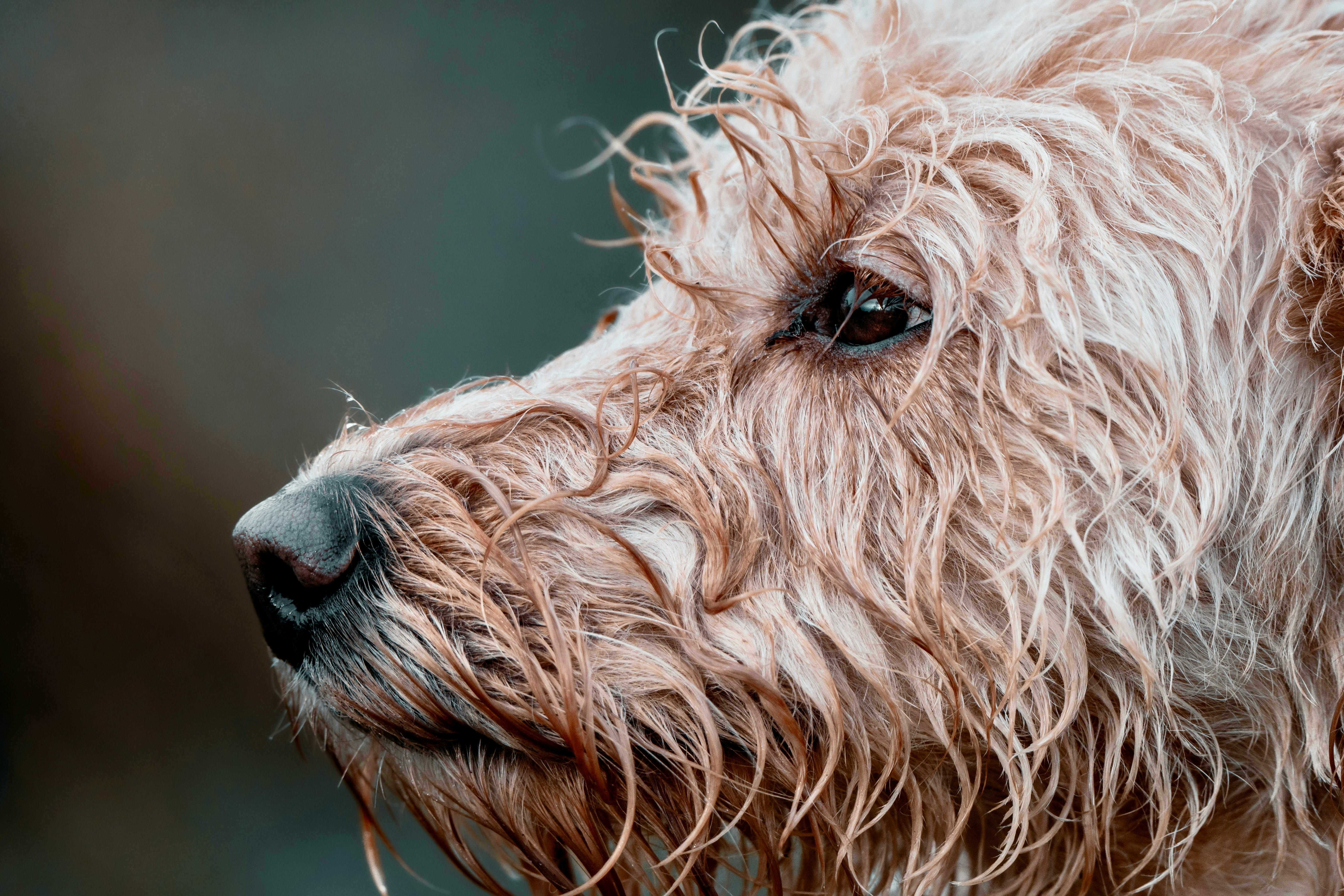
When you see a dog with a wet nose, you might wonder, “Is a wet nose healthy?” This question has been around for ages, and many dog owners have their own opinions about the significance of canine nasal moisture. In this article, we will explore the myths and facts about why do dogs have wet noses and discover the fascinating truth behind this common characteristic.
Canine Nose 101: What’s Normal?
A dog’s nose is generally moist, but have you ever thought about why that is? The moisture on a dog’s nose serves several functions, from helping them smell better to regulating body temperature. Here’s some important info:
- Enhanced Smell: Dogs have an incredible sense of smell, which is partly due to the moisture on their noses. Wetness helps to trap scent particles, making it easier for dogs to detect odors.
- Cooling Mechanism: Just like sweating for humans, a wet nose helps dogs cool down when they’re hot. When the moisture evaporates, it cools the skin and helps regulate their body temperature.
- Health Indicator: Many people believe that a wet nose indicates a healthy dog, while a dry nose could mean illness. However, this is not always true and varies with each dog.
Myths About Wet Noses
There are quite a few myths surrounding the idea of a wet nose being a sign of good health. Let’s bust some of those myths:
- Myth #1: A Wet Nose Always Means a Healthy Dog: While many healthy dogs have moist noses, a dry nose doesn’t always indicate sickness. Factors like weather, activity, and even sleep can affect nose moisture.
- Myth #2: Dogs Lick Their Noses to Keep Them Wet: Dogs do lick their noses, but not primarily to keep them wet. They do it to gather more scent information and for grooming purposes.
- Myth #3: All Dogs Have the Same Nose Moisture: Just like people, each dog is different. Some breeds naturally have drier or wetter noses, and that’s completely normal.
Why Do Dogs Have Wet Noses?
Now, let’s dive deeper into the reasons why dogs have wet noses. There are several biological and evolutionary reasons that contribute to this fascinating characteristic:
- Scent Detection: Dogs rely heavily on their noses to understand their environment. A moist nose can enhance their sense of smell by helping to capture scent particles in the air.
- Thermoregulation: Dogs do not sweat like humans; hence their noses play a vital role in keeping them cool. When a dog’s body temperature rises, moisture on their nose helps cool them down.
- Communication: Dogs communicate through scents. A wet nose might also help them pick up scents from other animals or humans, aiding in social interaction.
Factors Affecting Nose Moisture
Several factors can influence a dog’s nose moisture. Here’s a breakdown of some common ones:
- Environmental Conditions: Hot, dry weather can lead to a dry nose. In contrast, rainy or humid conditions may contribute to a wetter nose.
- Health Issues: Certain health problems can affect nose moisture. If a dog’s nose suddenly becomes excessively dry or cracked, it’s best to consult a vet.
- Age: Older dogs may experience changes in nose moisture due to aging.
Signs of Concern
While a wet nose is often seen as a sign of good health, there are certain signs that could indicate an issue. Pay attention to the following:
- Crusty or cracked nose
- Excessive dryness or wetness
- Changes in color (e.g., turning red or inflamed)
- Bleeding or discharge
If you notice any of these symptoms, it’s important to consult a veterinarian to rule out any underlying health issues.
Dog Nose Trivia: Fun Facts
Here are some fun and interesting facts about dog noses that you might not know:
- Dogs have up to 300 million scent receptors in their noses, compared to about 5 million in humans.
- The texture of a dog’s nose is unique, much like a human fingerprint.
- Dogs can detect certain diseases in humans, such as cancer and diabetes, simply by smelling.
Understanding the reasons behind a dog’s wet nose can enhance your appreciation of these incredible animals. So, the next time you see your furry friend with a moist nose, remember that it’s not just a cute feature; it’s an essential aspect of their biology and well-being. Keep an eye on those signs of health, and enjoy the many ways dogs enrich our lives!
What Your Dog’s Wet Nose Really Means: Decoding Canine Health Signals

Have you ever noticed your dog’s nose? It’s usually wet, right? But have you ever stopped to wonder why? Many people, including dog owners, often ask: “What does my dog’s wet nose means?” or “Why do dogs have wet noses?” It turns out, there’s a fascinating reason behind it. Dogs’ noses are not just cute and cold; they can actually tell us a lot about their health and well-being. Let’s dive into the intriguing world of canine health signals and decode what that wet nose might actually mean.
The Science Behind Wet Noses
Dogs’ noses are moist for a few reasons, primarily related to their health and survival. The wetness helps in scent detection, which is essential for a dog’s communication and hunting abilities. Here’s a breakdown of why dogs have wet noses:
- Enhanced Smell: A wet nose can trap scent particles better than a dry nose. This helps dogs to pick up scents from the environment, allowing them to navigate their world through smell.
- Temperature Regulation: Dogs don’t sweat like humans do. Instead, they cool themselves through panting and having a wet nose. The moisture on their nose evaporates, helping to lower their body temperature.
- Health Indicator: A dog’s nose can be an indicator of its overall health. A dry or warm nose may signal dehydration or illness, while a cool and moist nose generally indicates a healthy pup.
What a Wet Nose Can Tell You About Your Dog’s Health
A wet nose might seem like a trivial characteristic, but it can actually be a window into your canine companion’s health. Here are some scenarios to consider:
- Normal Health: If your dog’s nose is cool and moist, it’s likely they are healthy.
- Dehydration: A noticeably dry nose may suggest that your dog is dehydrated or overheated.
- Illness: If your dog has a warm and dry nose, it could be a sign of fever or illness. Always consult a vet if you notice changes.
- Allergies: Sometimes, a wet nose can also be a sign of allergies. If there’s excessive discharge or inflammation, a vet visit might be needed.
Fun Facts About Dog Noses
It might surprise you just how much dogs’ noses can do. Here are some fun facts:
- Unique Patterns: Just like human fingerprints, each dog has a unique nose print.
- Scent Sensitivity: Dogs have up to 300 million scent receptors, compared to about six million in humans!
- Temperature Check: A dog’s normal body temperature ranges between 101 to 102.5 degrees Fahrenheit, which is warmer than most humans.
Common Misconceptions
There are a lot of myths surrounding the wetness of dogs’ noses. Here’s a quick comparison of reality versus myth:
| Myth | Reality |
|---|---|
| A dog with a dry nose is sick. | A dry nose can mean dehydration, but not always illness. |
| Wet noses are only for certain breeds. | All dogs can have wet noses, regardless of breed. |
| Nose wetness is constant. | A dog’s nose can change throughout the day based on activity and temperature. |
Additional Canine Signals
Beyond the wet nose, dogs communicate their health through various other signals. Here’s what to keep an eye on:
- Behavior Changes: If your dog is more lethargic than usual or avoiding play, that could be a red flag.
- Appetite Changes: A sudden loss of appetite can indicate a problem and should not be ignored.
- Grooming Habits: Excessive licking or scratching may signal allergies or skin issues.
What to Do If You’re Concerned
If you notice abnormalities in your dog’s nose or any other health signs, it’s wise to take action. Here are a few steps:
- Monitor: Keep an eye on any changes in appetite, energy levels, or behavior.
- Consult a Veterinarian: If things don’t improve or worsen, reaching out to a vet is crucial. They can provide a thorough examination and guidance.
- Stay Hydrated: Ensure your dog always has access to fresh water, especially during warm weather.
Understanding what your dog’s wet nose really means can help you become a better pet owner. It’s not just a cute feature; it’s a significant indicator of your furry friend’s health. By paying attention to these signals, you can ensure they live a happy and healthy life. So next time you give your dog a pat, take a moment to appreciate that wet nose and all the fascinating insights it holds!
How Do Wet Noses Enhance Your Dog’s Senses? The Fascinating Biology Explained
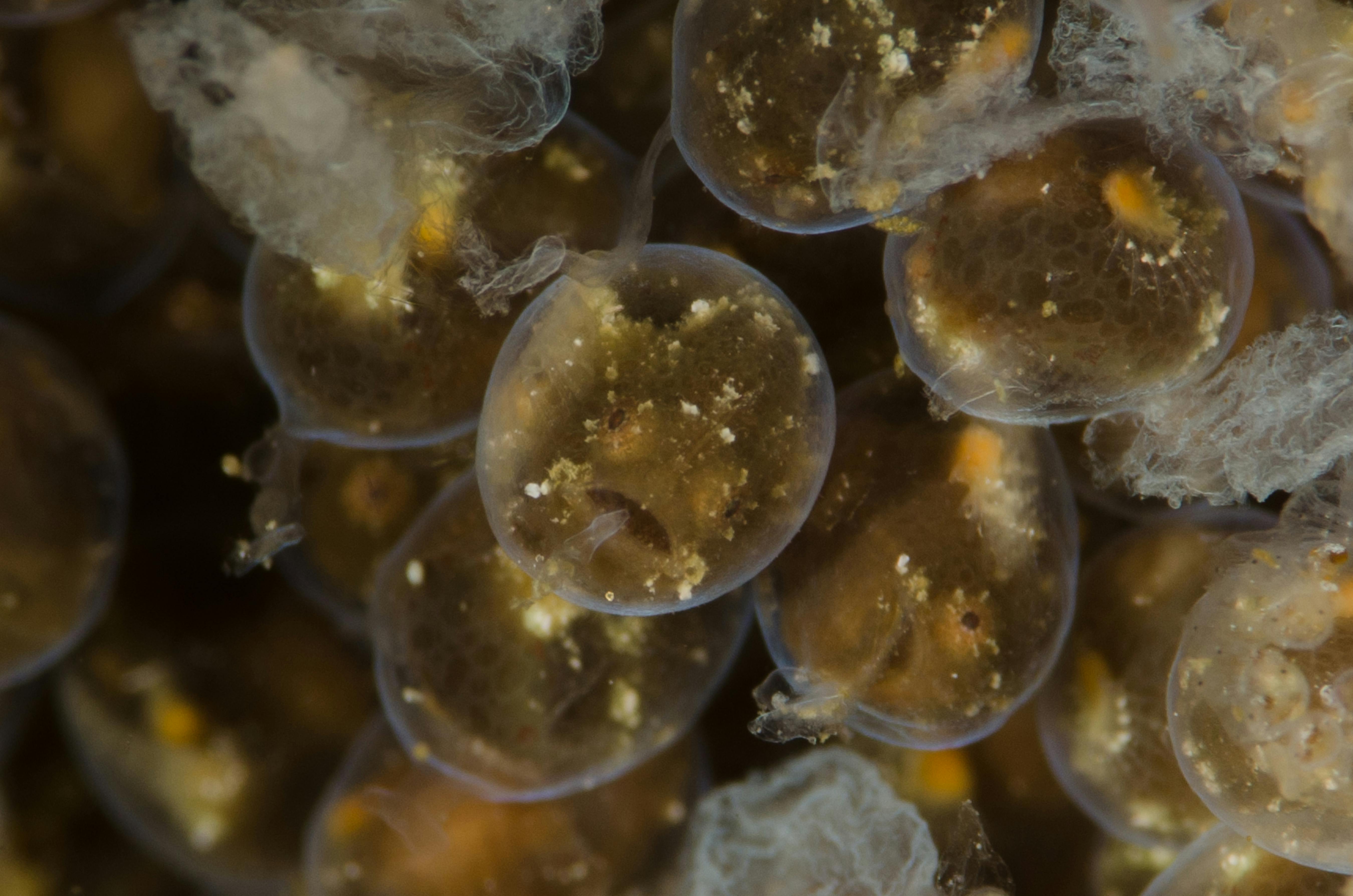
Do you ever wonder why dogs have wet noses? It’s one of those curious traits that make our furry friends even more fascinating. Wet noses are not just a quirk; they enhance a dog’s sensory perception in ways that might surprise you. The science behind why dogs have wet noses is pretty interesting and reveals a lot about their biology.
The Biology of a Dog’s Nose
A dog’s sense of smell is way more powerful than humans. While we have around 5 million olfactory receptors, dogs boast an impressive 220 million. But what role does that wetness play? The moisture on a dog’s nose helps to trap scent particles, enabling them to detect different smells more efficiently. When the nose is wet, it can absorb these scent molecules better, leading to enhanced olfactory capabilities.
Some key points about a dog’s nose include:
- Olfactory Receptors: Dogs have more than 40 times the number of olfactory receptors as humans.
- Wetness: Moisture on the nose helps to capture scent particles.
- Temperature Regulation: Wet noses help to cool down dogs as they don’t sweat like humans do.
Why Do Dogs Have Wet Noses?
The moisture on a dog’s nose comes from several sources. Saliva is one of them. When dogs lick their noses, they are not just keeping it clean; they are also moistening it to improve their sense of smell. This behavior is instinctual and vital for their survival.
Additionally, the wetness can also be attributed to the environment. When a dog is outside, the humidity in the air can also contribute to their nose being damp. This environmental factor works in tandem with their natural licking behavior to keep the nose moist.
Here are some reasons why wet noses are crucial:
- Enhanced Smelling: Wet noses are better at capturing scent molecules.
- Temperature Regulation: Helps dogs cool down on hot days.
- Social Interactions: Dogs often greet each other with nose-to-nose contact, and wet noses can convey trust and friendliness.
Historical Context of Dog Noses
The domestication of dogs dates back thousands of years, and their noses have been a critical part of their evolution. Early humans relied on dogs for hunting because of their superior sense of smell. Over time, certain breeds have been developed specifically for tracking scents, like bloodhounds and beagles.
Dogs have evolved to have wet noses as a natural adaptation to enhance their hunting and survival skills. In fact, certain types of dogs, like the Bloodhound, have been known to track scents that are days old. The history of dogs and their noses is intertwined with human civilization, showcasing a partnership that has lasted for ages.
The Fascinating Truth About Dog Noses
Let’s compare the anatomical structure of a dog’s nose to a human’s.
| Feature | Humans | Dogs |
|---|---|---|
| Olfactory Receptors | 5 million | 220 million |
| Nose Moisture | Minimal | High (due to licking) |
| Functionality | Basic scent detection | Advanced scent tracking |
This table illustrates how dogs have evolved to have a superior sense of smell compared to humans. While we may rely on our vision, dogs depend heavily on their olfactory abilities, making their wet noses a critical tool for survival.
Practical Examples of Wet Noses in Action
The wet nose is not just a neat feature; it has practical uses in everyday life. For example:
- Service Dogs: Many service dogs use their noses to detect medical conditions, such as low blood sugar or seizures.
- Search and Rescue: Dogs with wet noses are invaluable in search and rescue operations, using their sense of smell to locate missing persons.
- Therapy Dogs: Their wet noses and gentle demeanor provide comfort to those in hospitals, nursing homes, and schools.
In essence, the wet nose of a dog is a marvel of nature that enhances their senses and plays a vital role in their interactions with the world.
When you see your dog sniffing around, remember that their wet nose is not just an adorable feature. It’s a sophisticated tool that helps them explore their environment, communicate, and thrive. The next time you pet your furry friend, take a moment to appreciate the fascinating biology behind that wet nose!
Wet Nose, Happy Dog? Discover the Connection Between Canine Mood and Nose Moisture
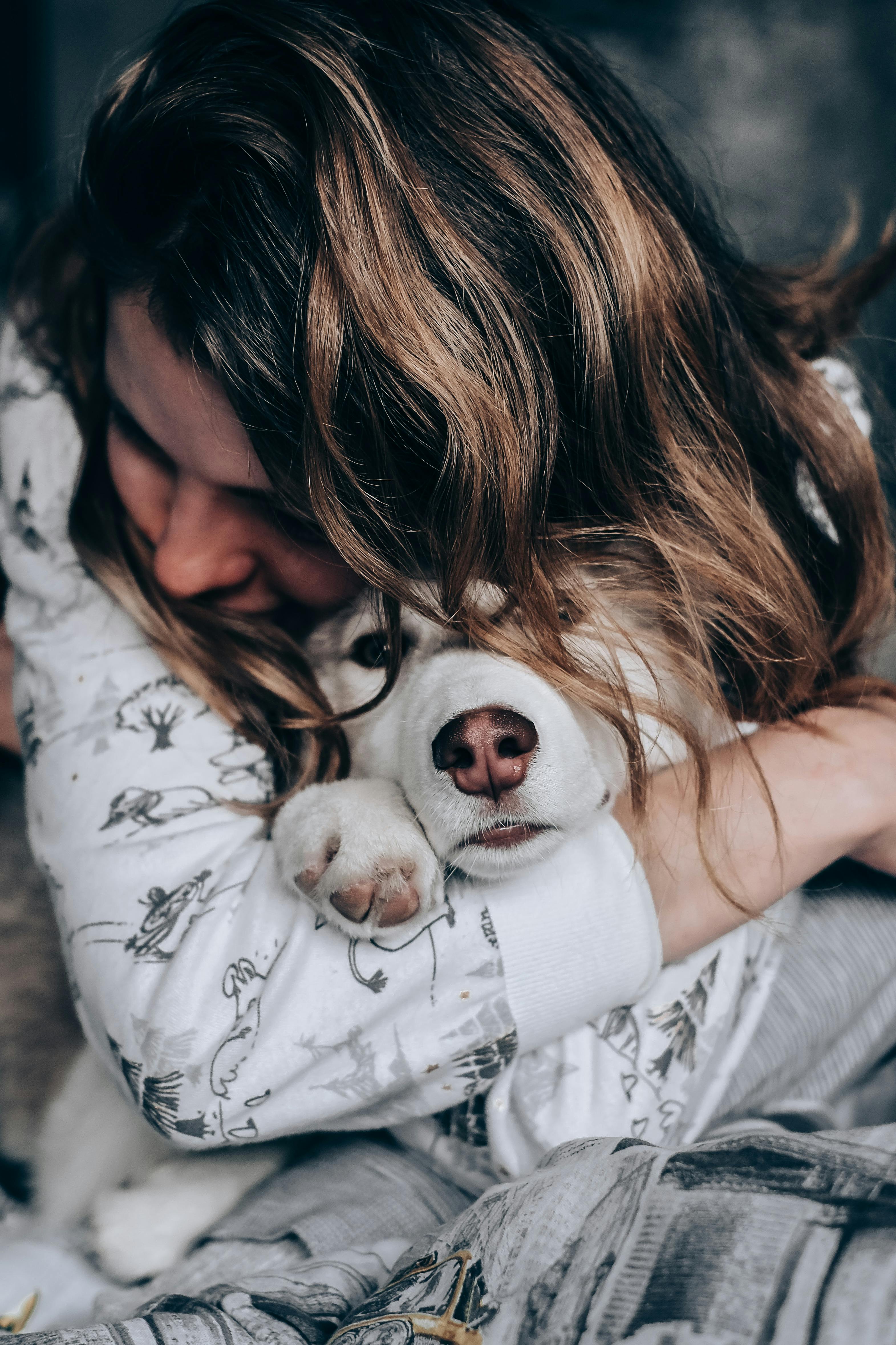
Have you ever petted your dog and noticed how their nose feels? It’s cold, damp, and often a little slimy. This unique characteristic of our furry friends has puzzled many pet owners and even scientists. What is it about a dog’s wet nose that seems to correlate with their happiness and overall health? Let’s dive into the science behind this phenomena and explore why do dogs have wet noses.
The Connection Between Nose Moisture and Canine Mood
First off, it’s important to understand why a dog’s nose is wet. Dogs have a keen sense of smell, which is significantly more powerful than that of humans. In fact, their sense of smell is estimated to be anywhere from 10,000 to 100,000 times more acute than ours. A wet nose helps to enhance this ability. When the nose is moist, it can absorb scent particles more effectively. So, a wet nose is more than just a cute feature; it plays a vital role in a dog’s ability to perceive their environment.
Many dog owners have noticed that their pets seem more cheerful when their noses are wet. While it might seem like a coincidence, there are some good reasons behind this connection. A moist nose often indicates that a dog is hydrated and healthy. Dehydration can lead to a dry nose, which might be a sign of illness or distress. Therefore, a happy, wet nose could indeed reflect a happy, healthy dog.
Why Do Dogs Have Wet Noses?
Now, let’s look deeper into the question, “Why do dogs have wet noses?” Here’s a list of reasons that explain this fascinating trait:
- Scent Enhancement: As mentioned, moisture helps dogs pick up scents better. This is crucial for their survival instincts, social interactions, and even playtime.
- Temperature Regulation: Dogs do not sweat like humans. They primarily regulate their body temperature through panting. A wet nose can help cool them down, especially on hot days.
- Health Indicator: A wet nose is often a sign that your dog is healthy. If you notice it becoming dry and cracked, it might be time to consult a vet.
- Behavioral Signals: Dogs often use their noses to communicate. A wet nose can signal friendliness or curiosity when they greet another dog or person.
The Anatomy of a Dog’s Nose
Let’s break down how a dog’s nose is structured and why it matters. Here’s a simple table of elements related to a dog’s nose:
| Feature | Description |
|---|---|
| Moisture Glands | Dogs have special glands that produce mucus to keep their noses moist. |
| Sense Receptors | A dog’s nose has around 300 million scent receptors, allowing them to detect a wide range of smells. |
| Nasal Turbinates | These are structures inside the nose that help filter and humidify the air dogs breathe. |
Historical Context of Dog Noses
Historically, dogs have been companions to humans for thousands of years. Their keen sense of smell has made them invaluable in various roles, including hunting, herding, and search-and-rescue missions. Ancient cultures recognized the importance of a dog’s nose. For example, in ancient Egypt, dogs were often depicted in art, showcasing their loyalty and hunting abilities. The Romans also valued dogs for their tracking skills, which were heavily reliant on their wet noses.
Practical Examples of Nose Functions
Let’s look at some practical examples of how a dog’s wet nose can affect their day-to-day activities:
- Tracking: Dogs in law enforcement rely on their wet noses to detect drugs, explosives, or even missing persons.
- Hunting: Hunters often use dogs to find game; the moisture on a dog’s nose helps them track scents over long distances.
- Therapy: In therapy settings, dogs use their noses to connect with people, offering comfort and companionship.
Wet noses are a natural and fascinating feature of dogs that serves multiple purposes. They not only help dogs navigate their world but also reflect their emotional and physical well-being. The next time you see your dog with a wet nose, remember that it’s not just an adorable trait; it’s a sign of their health and happiness.
Understanding the science behind a dog’s wet nose connects us deeper to our furry companions, making our bond even stronger. So, embrace those wet-nosed cuddles—they’re more than just cute; they’re a symbol of a happy, healthy pup!
Do All Dogs Have Wet Noses? The Variations Across Breeds Explained
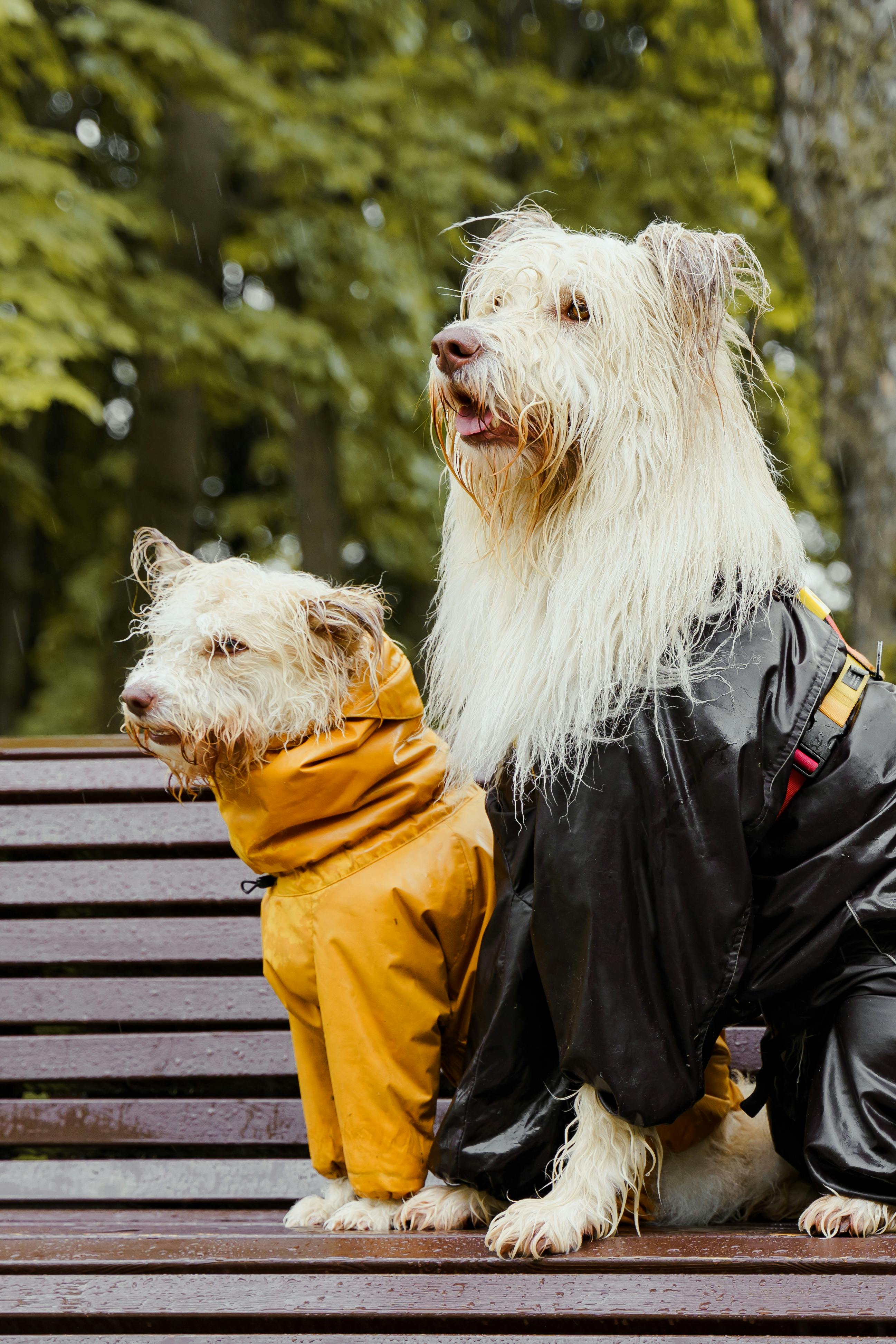
Dogs are often seen with their noses wet, which raises the question, do all dogs have wet noses? It’s a common belief that a wet nose is a sign of a healthy pooch, but the reality is a bit more complicated. Different breeds can have varying nose types, and several factors influence the moisture levels. In this article, we explore the fascinating truth about why dogs have wet noses, variations across breeds, and what it means for your furry friend.
What Causes a Dog’s Nose to Be Wet?
The moisture on a dog’s nose serves several purposes. Firstly, it helps to enhance their sense of smell. Dogs have an incredible olfactory system, and the wetness on their noses allows scent particles to dissolve more easily. This means they can pick up on smells better than humans can even imagine! A dog’s nose is more than just cute; it’s a highly sensitive organ.
Also, a wet nose is thought to help regulate temperature. Dogs do not sweat like humans. Instead, they rely on panting and the moisture on their noses to cool down. This is particularly important during hot weather or after exercise, as it helps them maintain a stable body temperature.
Do All Breeds Have Wet Noses?
Not every dog breed has a wet nose all the time. Some breeds are known for having drier noses, which can be perfectly normal. Here’s a quick look at some breeds and their nose characteristics:
- Bulldogs: Often have a drier nose due to their short snouts.
- Pugs: Similar to Bulldogs, their flat faces can lead to less moisture.
- Dachshunds: Can have a range of wetness, but many are on the drier side.
- Retrievers: Generally have very moist noses, especially when excited or active.
Factors Influencing Nose Wetness
Several factors can affect the moisture of your dog’s nose, including:
- Temperature: Hot weather can cause a dog’s nose to dry out.
- Hydration: Dehydrated dogs may have drier noses.
- Health Conditions: Certain health issues can lead to a dry nose, requiring attention.
- Age: Older dogs may experience changes in nose moisture.
Why Is a Wet Nose Considered Healthy?
The belief that a wet nose equals a healthy dog is partly rooted in tradition and observation. Here are some reasons why wet noses are often viewed as a sign of good health:
- Active Scent Detection: A wet nose indicates that a dog is likely in a good state of alertness and able to sniff out scents.
- Hydration Levels: A moist nose usually indicates that a dog is well-hydrated, which is essential for their overall health.
- Temperature Regulation: As mentioned earlier, a wet nose aids in temperature control; thus, it shows the dog is managing its body heat effectively.
When to Be Concerned About Your Dog’s Nose
While a dry nose can be normal for some dogs, there are signs to watch for that could indicate health issues. Here are some red flags:
- Cracked or bleeding nose: This could indicate dehydration or a skin condition.
- Persistent dryness: If your dog’s nose is dry for an extended period, it might need a vet check.
- Changes in color: If the nose changes color drastically, it’s worth consulting a veterinarian.
Practical Tips for Dog Owners
- Keep Your Dog Hydrated: Always provide fresh water. Dehydration can lead to a dry nose.
- Monitor the Environment: Be mindful of temperature changes; use fans or AC during hot days.
- Regular Vet Check-ups: Ensure your dog’s health is monitored by a professional.
- Moisturize if Necessary: If your dog’s nose is chronically dry, consider pet-safe moisturizers.
In the end, while a wet nose is often associated with good health, the reality is that not all dogs conform to this idea. Breeds, environmental factors, and individual health all play a significant role. So the next time you see your furry friend with a wet nose, remember it’s not just a cute quirk — it’s a fascinating aspect of their biology and well-being!
The Importance of Nose Moisture: How It Affects Your Dog’s Overall Health

Many dog owners often wonder about the significance of their furry friends’ wet noses. You might have noticed how a dog’s nose is usually moist, and you probably ask yourself, “Why do dogs have wet noses?” Well, let’s dive into this fascinating subject and explore the importance of nose moisture in dogs and how it contributes to their overall health.
The Basics of Dog Nose Moisture
Dogs have wet noses for several reasons. Firstly, moisture helps in their sense of smell. A dog’s nose contains special olfactory receptors, and the wetness helps to trap scent particles, enhancing their ability to detect odors. This is vital for their survival and plays a significant role in their behavior.
Here are some key points about dog nose moisture:
- Sense of Smell: Wet noses help to absorb scent chemicals, improving the dog’s olfactory capabilities.
- Temperature Regulation: Dogs don’t sweat like humans, and their noses help cool them down.
- Health Indicator: A healthy nose is usually moist, while a dry nose can sometimes indicate health issues.
The Science Behind Nose Moisture
The moisture on a dog’s nose comes from several sources, including mucous membranes. These membranes produce a thin layer of mucus that keeps the nose moist. Additionally, dogs may lick their noses, which adds to this moisture.
Dogs have a fascinating anatomy that supports this moisture retention. The unique structure of their nasal passages allows for efficient air filtration and scent absorption. When dogs sniff, they take in air through their noses, and the moisture present captures scent molecules.
Health Implications of Nose Moisture
A wet nose can often indicate that your dog is in good health. However, a dry or cracked nose could signal potential health issues. Here’s a breakdown of what different nose conditions may indicate:
- Wet and Cool: Healthy and happy dog.
- Dry and Warm: Could be a sign of fever or dehydration.
- Cracked or Flaky: Might indicate allergies or skin disorders.
- Excessively Wet: Could suggest a respiratory infection or other health problems.
Factors That Affect Nose Moisture
Several factors can influence a dog’s nose moisture, including:
- Weather Conditions: Hot or dry weather can lead to dry noses.
- Hydration Levels: A dehydrated dog may have a drier nose.
- Health Status: Illness can directly affect nose moisture.
Fun Facts About Dog Noses
Did you know that a dog’s sense of smell is approximately 10,000 to 100,000 times more sensitive than humans? Here are some more interesting facts:
- Unique Nose Prints: Just like human fingerprints, each dog has a unique nose print.
- Temperature Regulation: Dogs use their noses to help regulate body temperature.
- Communication Tool: They use their noses to gather information about their environment and communicate with other dogs.
Comparing Dog Noses to Human Noses
Here’s a quick comparison of dog noses versus human noses:
| Feature | Dog Nose | Human Nose |
|---|---|---|
| Moisture | Generally wet | Usually dry |
| Sense of Smell | Highly developed | Less sensitive |
| Functionality | Aids in hunting, tracking | Mainly for breathing |
| Temperature Regulation | Through moisture evaporation | Sweating and breathing |
Practical Tips for Nose Care
So, how can you ensure your dog’s nose stays healthy? Here are some practical tips:
- Hydration: Always provide fresh water for your dog.
- Regular Vet Check-ups: Monitor any changes in the nose’s condition.
- Avoid Harmful Chemicals: Be cautious with household cleaners and other chemicals that may irritate your dog’s nose.
The Bottom Line
Understanding why dogs have wet noses and the importance of nose moisture goes beyond just curiosity; it’s essential for their health. A wet nose is often a sign of a healthy and happy dog, while any changes could indicate potential health issues. Always keep an eye on your dog’s nose and consult with a veterinarian if you notice anything unusual. By being proactive about your dog’s health, you can help ensure they live a long and happy life.
Can Weather Affect Your Dog’s Nose Moisture? 7 Factors to Consider
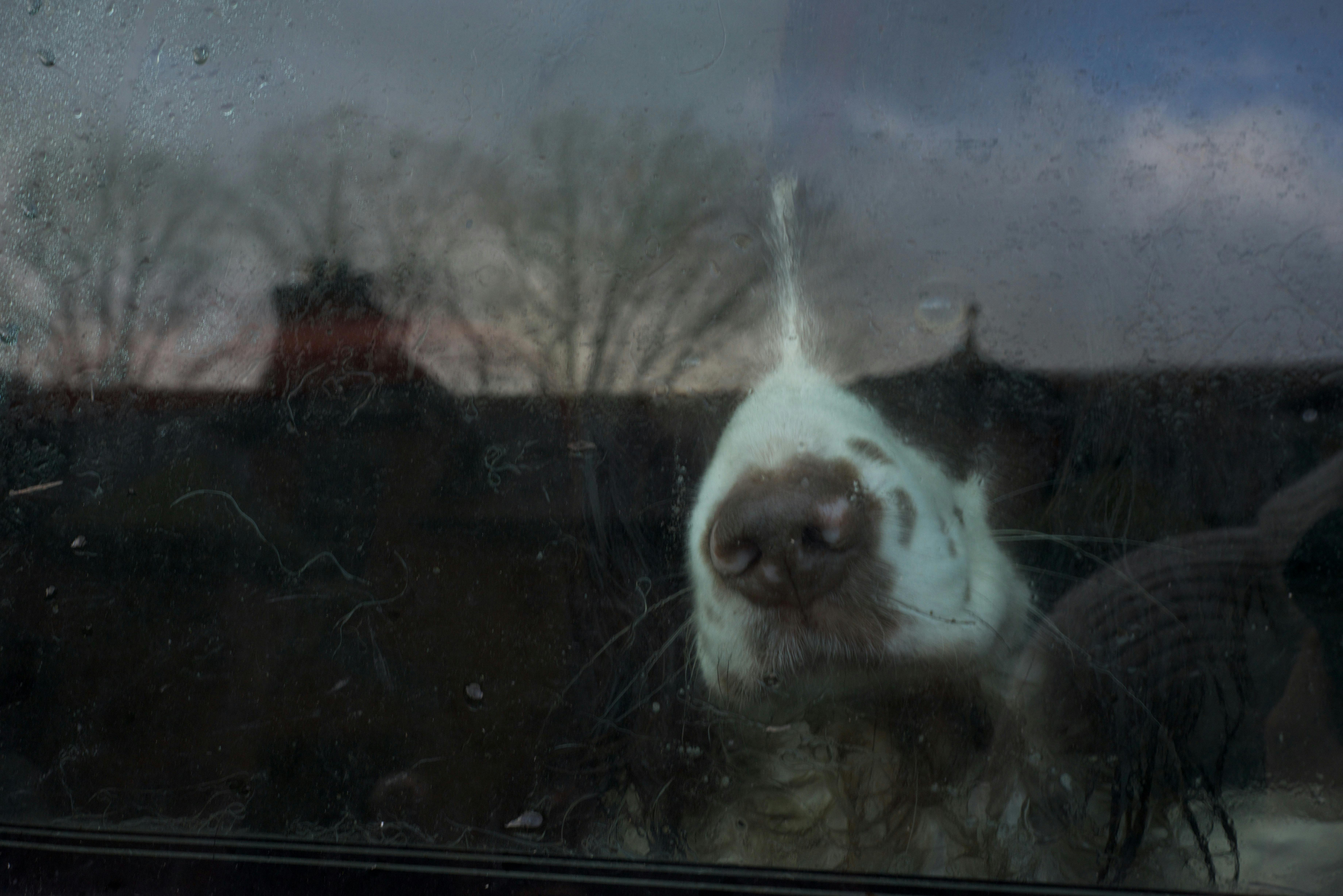
When you own a dog, you probably notice their wet nose and might’ve wondered, can weather affect your dog’s nose moisture? It’s actually a pretty fascinating topic, and there’s a lot more to it than just a simple yes or no. Dogs have wet noses for several reasons, and understanding this could help you take better care of your furry friend.
Why Do Dogs Have Wet Noses?
First off, let’s dig into why dog noses are wet. There’s a few reasons for this peculiar feature:
- Temperature Regulation: Dogs sweat very little. Instead, they primarily regulate their body temperature through their noses. A wet nose helps cool them down.
- Enhanced Smell: A moist nose can capture scent particles better. This is why dogs are such great sniffers! Their noses help them detect food, other animals, and even changes in their human’s emotions.
- Health Indicator: A wet nose is often associated with a healthy dog. If your dog’s nose feels dry, it might be a sign of dehydration or illness, although not always.
Can Weather Affect Your Dog’s Nose Moisture?
Now, let’s talk about how weather can play a role in your dog’s nose moisture. The truth is, various environmental factors influences how wet or dry your dog’s nose can get.
- Humidity Levels: High humidity can keep your dog’s nose moist. In places like New York during summer, your dog might have a more consistently wet nose.
- Temperature Extremes: Cold weather can lead to a drier nose. If it’s too cold, your dog’s nose could dry out, especially if they’re spending a lot of time outside.
- Wind: Windy days can dry out a dog’s nose faster. If you live in a windy region, keep an eye on your pup’s nose moisture.
- Rain: Naturally, when it rains, your dog’s nose might stay wetter for longer. Dogs love to play in the rain, which can help keep their noses moist.
- Indoor Climate: Central heating or air conditioning can dry out the air inside your home. This might also lead to drier noses.
- Allergies: Seasonal allergies can lead to nose irritation, which might affect moisture levels.
- Age: Older dogs might have drier noses compared to younger dogs. This can be due to a variety of health factors.
The Impact of Weather on Moisture
Here’s a quick breakdown of how different weather conditions can impact your dog’s nose moisture:
| Weather Condition | Effect on Nose Moisture |
|---|---|
| High Humidity | Increased moisture |
| Cold Temperatures | Decreased moisture |
| Windy Days | Decreased moisture |
| Rain | Increased moisture |
| Dry Indoor Air | Decreased moisture |
Tips for Keeping Your Dog’s Nose Healthy
To ensure your dog’s nose stays healthy and moist, consider these practical tips:
- Hydration: Always provide fresh water. Dehydration can lead to a dry nose.
- Limit Exposure: On very hot or cold days, limit your dog’s time outside.
- Nasal Balms: There are products available to apply to your dog’s nose, which can help keep it moisturized.
- Regular Checkups: Regular vet visits can help catch any underlying health issues that may affect nose moisture.
Fascinating Facts About Dog Noses
Dogs have some of the most fascinating noses in the animal kingdom. Here’s a few interesting tidbits you might not know:
- Unique Prints: Just like human fingerprints, each dog’s nose print is unique.
- Scent Sensitivity: Dogs’ noses have up to 300 million smell receptors compared to humans’ 5 million.
- Nasal Passages: The structure of a dog’s nose allows them to separate scents, making them incredibly sensitive to smells.
Understanding the reasons behind your dog’s wet nose and how weather can affect it is crucial for every dog owner. By paying attention to these factors, you can help ensure your furry friend stays comfortable and healthy. The next time you pet your dog and notice their nose, you’ll have a deeper appreciation for this remarkable aspect of their biology.
Why Do Dogs Lick Their Noses? The Role of Moisture in Canine Behavior

Have you ever wonder why dogs lick their noses? It’s a common sight for dog owners to see their furry friends frequently sticking their tongues out to moisten their snouts. But what’s the deal with wet noses anyway? This article dives into the captivating world of canine behavior and explores the moisture’s role in doggie lives.
The Science Behind Wet Noses
Dogs have wet noses for several reasons. Primarily, a moist nose helps them smell better. The moisture on a dog’s nose captures scent particles from the air. Dogs has an extraordinary sense of smell, estimated to be tens of thousands to possibly even 100,000 times better than humans. Here a few reasons why the wetness is so important:
- Enhanced Smell: A wet nose can absorb scent molecules more efficiently.
- Thermoregulation: Dogs don’t sweat like humans, so a moist nose helps to cool their body temperature.
- Health Indicator: A wet nose is often seen as a sign of good health. If it becomes dry or cracked, it might be a sign of dehydration or illness.
Why Do Dogs Lick Their Noses?
Licking their noses is part of a dog’s natural behavior. It serves multiple purposes, which include:
- Scent Gathering: By licking their noses, dogs help to ensure their sense of smell is sharp, or maybe they just checking out the scents around them.
- Stress Relief: Dogs sometimes lick their noses when they feels anxious, acting as a calming mechanism.
- Hygiene: Just like humans wash their hands, dogs lick their noses to keep them clean from dirt and food particles.
Historical Context of Canine Noses
The behavior of dogs licking their noses can be traced back to their ancestors. Wild canines, such as wolves, would lick their noses to pick up scents from their environment. This behavior is deeply ingrained in their DNA. Over time, domestic dogs have retained this instinct, even if their environment is less wild than that of their ancestors.
The Role of Moisture in Canine Behavior
Moisture plays a vital role in how dogs interact with their surroundings. It’s not just about scent; it’s about communication, too. Dogs often use their nose to gather information about other animals or humans, and the moisture helps them decipher that information better.
- Communication: Dogs say a lot with their noses. A wet nose often signifies curiosity or friendliness.
- Exploration: Dogs might lick items or surfaces to learn more about their environment. A moist nose allows them to gather new information quickly.
- Affection: When a dog licks your face or hands, it can be a sign of affection, almost like a kiss.
Comparing Dry vs. Wet Noses
Some dog owners may be curious if a dry nose is a cause for concern. Here is a quick overview of what to look for:
| Condition | Wet Nose | Dry Nose |
|---|---|---|
| General Health | Usually healthy | Can indicate dehydration or illness |
| Temperature | Cool to touch | Warmer than normal |
| Behavior | Normal licking | Less licking or grooming |
| Hydration Level | Well-hydrated | May be dehydrated |
Practical Examples of Nose Behavior
Here are some everyday scenarios where you might notice your dog’s nose behavior:
- After Eating: Dogs will often lick their noses clean after meals, ensuring they are tidy.
- Exploring Outdoors: When walking or playing outside, you might see your dog frequently pausing to lick its nose as it takes in the scents around.
- Meeting New Dogs: In social settings, dogs often lick their noses when meeting other dogs, which can be a way to show they’re friendly and non-threatening.
Understanding the reasons why dogs lick their noses and the importance of moisture can enhance your relationship with your pet. Their wet noses are not just cute; they are a window into their world, full of scents, emotions, and health indicators. Next time you see your pup giving their nose a good lick, you can appreciate the fascinating truth behind this behavior!
In the end, the mystery of why dogs have wet noses goes beyond just looks—it’s a blend of biology, history, and a touch of canine charm. So, keep observing your furry friend, and you might just uncover more astonishing facts about their behavior.
Conclusion
In conclusion, the wet noses of dogs serve several important functions that contribute to their overall health and well-being. The moisture on their noses enhances their sense of smell, allowing them to detect scents more effectively, which is crucial for their communication and interaction with the world around them. Additionally, a wet nose helps to regulate their body temperature and can indicate their hydration levels. While the texture and temperature of a dog’s nose can vary, a consistently dry or warm nose may signal health issues that warrant attention. If you notice any concerning changes in your dog’s nose or overall behavior, it’s always best to consult a veterinarian. Understanding the purpose of a dog’s wet nose not only deepens our appreciation for these beloved companions but also underscores the importance of regular health checks. So, keep an eye on your furry friend’s nose and ensure they stay happy and healthy!

